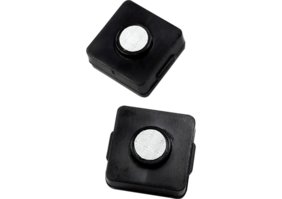A dry electrochemical cell has a polymer as basis and chemistry for the electrochemical reactions embedded in the polymer layer. This enables new and innovative mechanical designs for the finished cell. An example of such a new design is shown in the figure below. The ES1 sensor is the smallest electrochemical sensor in the world. The ES1 cell size has been reduced in all dimensions allowing for small and more compact gas analyzers to be build. The gases that can be detected using the SPE technology are many. The first generation ES1 gas sensors have been developed for emission control and monitoring of gases such as O2, CO, NO2, H2S, H2 and volatile organic compounds (VOCs).
The SPE technology support high volume production strategies, because the layers are printed onto a carrier substrate. This is also new in the gas sensor industry and will enable new applications in for instance home appliances and intelligent air conditioning. The power needed to drive the circuit is so low that battery operation and remote applications relying on long battery lifetimes are becoming feasible strategies for new product developments based on the ES1 SPE gas sensors.
The ES1 line of gas sensors comes with different standard measurement ranges, but other measurement ranges are also possible, because the SPE technology allows specific custom designs. Other parameters that can be varied in order to fit certain applications are the response time of the sensor and the sensitivity of the sensor. The sensors are individually calibrated and a test report comes with every sensor. The expected lifetime of the ES1 sensors is more than 3 years.
Product details


